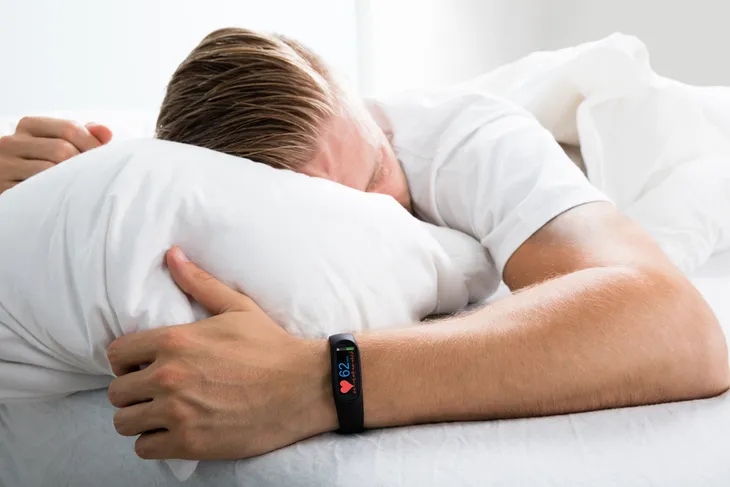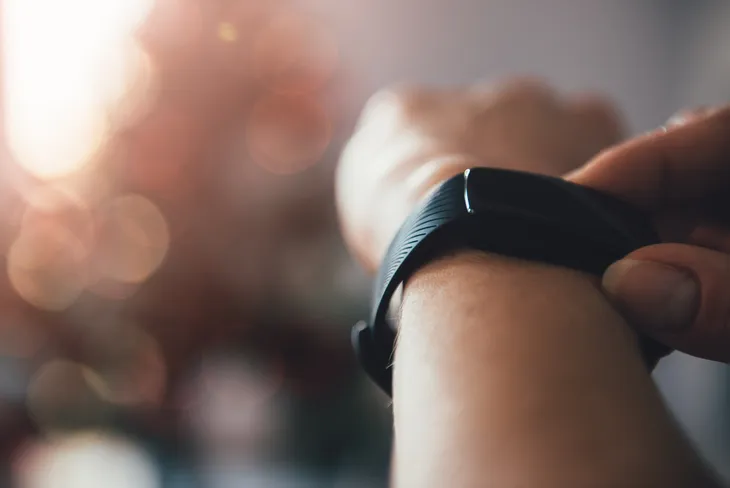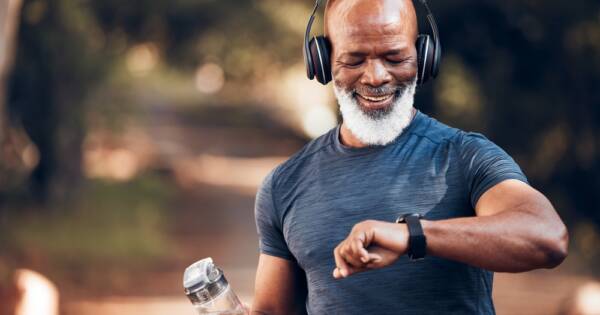It’s 2016 and suddenly it seems we never lived without fitness trackers. The data they provide you with after a run, day at the office, or even a night of sleep…seriously, it’s amazing and kind of scary at the same time. However, if you want accuracy from your fitness tracker, you need to get real with how you’re using the device.
Here are seven ways you might be messing with your fitness tracker accuracy…
1. You Wear It Constantly…For Everything
You wear your fitness tracker to walk to the grocery store. You wear your fitness tracker to vacuum…alright I guess that counts. However, you also wear your fitness tracker while you binge watch Netflix (and it only counts your trips up and down the stairs to use the bathroom).
You might not realize it, but fitness trackers are meant to count activities that involve physical fitness. So when you’re just at home chilling or getting busy with your significant other, it’s not meant to track these things (and it’s a little embarrassed that you brought it into the room with you in the first place). Like everything in life, there’s a time and place for fitness tracking…so don’t cheat by wearing it when you’re not actually doing anything active.
2. You Wear it Where?!
I’m not playing the blame game. Trust me; when I think of how many times I read a full user’s manual before using a piece of technology, I’m as guilty as anyone else. However, if you truly expect accuracy from any piece of equipment, you should be aware of how to use it most effectively.
For instance, according to a study published in Medicine and Science in Sports and Exercise, fitness trackers get the most accurate readings when they’re attached at the waistband, not worn on the wrist, when walking and running. Those who wear it on the wrist tend to have steps missed by their devices. So if you expect every single step to be counted by your tracker, it makes sense to wear your tracker where it will get the most accurate reading.
3. Don’t Let Your Dominant Hand Lead
Now you might not be aware of this minor detail that has major impacts on the accuracy of your tracker…I know I didn’t. Shape.com reports that if you don your fitness tracker on the wrist of your dominant hand (right hand if you’re right-handed and left hand if you’re a southpaw) your tracker data may be off.
This is due to the fact that fitness technology, such as the Fitbit, must have a special setting turned on to reduce sensitivity so it doesn’t pick up all the excess ticks and twitches in your dominant hand (and record them as steps). So wear your tracker honestly on your less-dominant wrist or wear it at your waistband.
4. You Don’t Press Reset
It seems simple enough to press reset on your fitness tracker after a hard day of stepping and sweating, but the truth is many people forget this easy step and then mess with the accuracy of their data the following day.
To avoid this classic “mis-step” (see what I did there?), set a reminder in your phone to reset your fitness tracker at the end of every day or every morning before you put it on. However, if you have a really fancy device, it may reset itself.
5. You Wear It On Your Waist At Work
There are two basic rules about fitness trackers: you should wear them on your waistband when performing exercise (i.e., walking running, or cycling) and wear them on your wrist (on the non-dominant hand) when you’re doing non-physical-type activities throughout your day (i.e., working or just chilling).
According to the findings of a Medicine and Science in Sports and Exercise study, when it comes to casual activity, fitness trackers worn on the wrist when moving freely, record more accurately than those worn on the waist. Bottom line: wear your tracker on your wrist to ensure better accuracy when you’re not working out.
6. You Don’t Walk With Purpose
Everyone starts out somewhere. However, if you’re brand new to walking or walk very slow due to an injury, you’ll probably want to gradually improve the speed of your stride before you invest in a fitness tracker. Why?
A 2012 study published by the National Institutes of Health, monitored the effectiveness of fitness monitors on a group of 56 walkers. Findings showed that fitness trackers worn by the slowest walkers (those who walked less than 2.5 miles each hour) tended to mis-record steps (or not detect them at all). It’s totally fine if your pace is slow, just concentrate on improving before you buy an expensive tracker.
7. You Forgot to Calibrate
As with almost everything we talk about on Activebeat, people are wonderfully unique and tend to vary when it comes to almost every aspect of health and fitness. Unfortunately, fitness trackers depend on standard measurements if you expect them to record data precisely. That’s why calibrating your fitness tracker to your individual stride, speed, leg length, and so forth is important.
When it comes to data collection, speed, incline, surface, pace, and activity (i.e., walking or running) are vital to the accurately of your device. If you run then walk and then run again during your workout, calibrate your device each time so that it can record your steps with accuracy.










